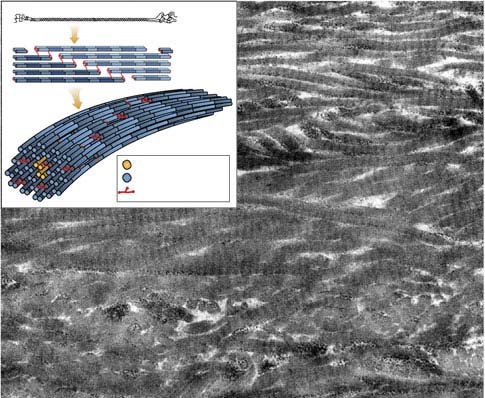Bone Collagen: New Clues to Its Mineralization Mechanism from Recessive Osteogenesis Imperfecta. Eyre DR, Weis MA. Calcif Tissue Int. 2013 Mar 19. [Epub ahead of print] PMID: 23508630
In this review article, Dr. David Eyre and Mary Ann Weis (part of the Collagen Biology and Genetic Disorders Lab) discuss the mechanism behind bone collagen mineralization by examining recent findings about the genetic disorder osteogensis imperfecta.
 Osteogenesis Imperfecta (OI) is a congenital bone
disorder that is commonly known as “brittle bone disease.” OI causes bones to fracture easily; it can
cause loose joints, short stature and severe bone deformation. It is caused by the inadequate formation of
collagen—an important protein structure that creates the matrix on which bone
is formed. Until most recently, OI was considered to be
an autosomal dominant gene mutation. It
is now found that 90% of OI cases are indeed caused by dominant mutations, but
the remaining 10% of OI cases are caused by autosomal recessive gene
mutations.
Osteogenesis Imperfecta (OI) is a congenital bone
disorder that is commonly known as “brittle bone disease.” OI causes bones to fracture easily; it can
cause loose joints, short stature and severe bone deformation. It is caused by the inadequate formation of
collagen—an important protein structure that creates the matrix on which bone
is formed. Until most recently, OI was considered to be
an autosomal dominant gene mutation. It
is now found that 90% of OI cases are indeed caused by dominant mutations, but
the remaining 10% of OI cases are caused by autosomal recessive gene
mutations.
These recessive mutations have been recently shown to affect collagen formation in a general way—by affecting the post-translational modifications of collagen fibrils. The exact molecular mechanism of how bone collagen is mineralized is still unclear but two main beliefs are debated: Has bone collagen evolved special features to allow mineralization or is bone collagen “generic” and mineralization follows the post-translational processes. These authors argue that it is the posttranslational features of bone collagen that regulate the structure of the eventual collagen matrix.
Click here to read the full article